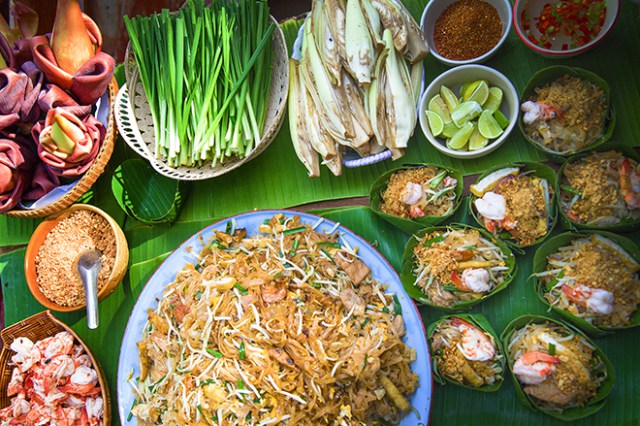Have you ever wondered just how diverse and vibrant Thai cuisine can be? Well, prepare to be amazed as we take you on a journey through the rich and flavorful world of Thai regional cuisine. From the spicy and aromatic dishes of the North to the seafood delights of the South, there is truly something for everyone in Thai cuisine. So, if you’re ready to discover the hidden gems and culinary delights of Thailand, keep reading!
In this article, we’ll delve into the different regions of Thailand and the unique dishes and flavors that define each one. From the delicate and fragrant curries of Central Thailand to the fiery and intense flavors of the Northeast, you’ll learn about the distinct characteristics of each region’s cuisine. We’ll explore the key ingredients, cooking techniques, and flavors that make Thai food so irresistible.
From the world-famous Pad Thai to lesser-known dishes like Khao Soi and Mu Ping, we’ll introduce you to a variety of traditional Thai dishes that you can try at home or seek out at your local Thai restaurant. Whether you’re a fan of spicy food or prefer milder flavors, there’s something for every taste bud in Thai cuisine. So, get ready to expand your culinary horizons and discover the richness and diversity of Thai cuisine in our regional food guide.
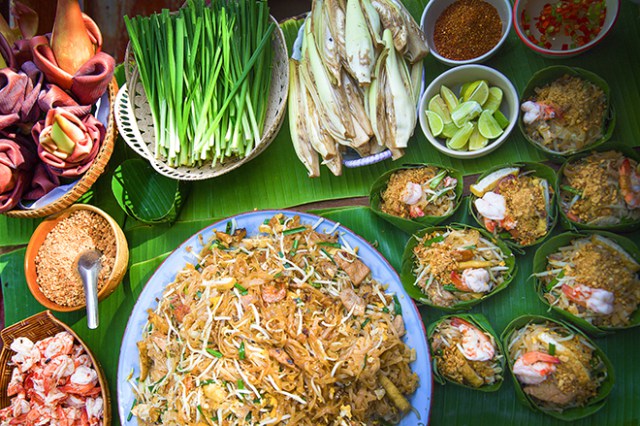
Northern Thai Cuisine
Introduction to Northern Thai Cuisine
When it comes to Thai cuisine, most people are familiar with popular dishes such as Pad Thai and Green Curry. However, there is so much more to explore and discover in the world of Thai food. Each region in Thailand has its own unique culinary traditions and flavors, offering a diverse range of dishes that are sure to delight your taste buds.
Let’s start our culinary journey in the north of Thailand. Northern Thai cuisine, also known as Lanna cuisine, is a delightful blend of flavors and influences from neighboring countries such as Burma (Myanmar) and China. The food of this region is often characterized by its bold and aromatic flavors, as well as its use of fresh herbs and spices.
Influence of Burmese and Chinese Cuisine
Due to its proximity to Burma, Northern Thai cuisine has been heavily influenced by Burmese culinary traditions. One of the most popular dishes that showcases this influence is Khao Soi, a rich and creamy noodle soup made with a combination of boiled and crispy egg noodles, tender meat, and a savory curry broth. This dish perfectly balances the flavors of sweetness, spiciness, and acidity, making it a true Northern Thai favorite.
In addition to Burmese influences, Chinese cuisine has also had a significant impact on the food of Northern Thailand. This can be seen in dishes such as Sai Oua, which is a flavorful pork sausage made with a blend of herbs and spices. The sausage is grilled to perfection, resulting in a smoky and aromatic flavor that is simply irresistible.
Signature Dishes of Northern Thailand
Apart from Khao Soi and Sai Oua, Northern Thailand is also known for its other signature dishes. One such dish is Gaeng Hanglay, a rich and aromatic pork curry made with a combination of spices such as ginger, garlic, and turmeric. The curry is slow-cooked to perfection, resulting in tender and flavorful meat that pairs perfectly with a bowl of steamed rice.
Another must-try dish from Northern Thailand is Nam Prik Ong, a spicy tomato and pork dip that is served with fresh vegetables, such as cucumbers and cabbage. This dish showcases the bold and robust flavors of the region and is a perfect example of the unique culinary traditions found in Northern Thai cuisine.
Central Thai Cuisine
Introduction to Central Thai Cuisine
Moving on to Central Thailand, which includes the vibrant city of Bangkok, we discover a whole new world of flavors and culinary delights. Central Thai cuisine, also known as Siamese cuisine, is characterized by its richness and complexity of flavors. The food of this region is often spicy, aromatic, and full of vibrant colors.
Influence of Royal Thai Cuisine
One of the key influences on Central Thai cuisine is Royal Thai cuisine. This style of cooking originated in the royal palaces of Thailand and is characterized by its attention to detail, elegant presentation, and use of high-quality ingredients. Royal Thai cuisine often features dishes that are meticulously prepared and beautifully decorated, making them a feast for both the eyes and the taste buds.
One of the most famous dishes from Central Thailand is Tom Yum Goong, a hot and sour shrimp soup that perfectly balances the flavors of lemongrass, lime, chili, and fish sauce. This dish showcases the bold and intense flavors that are synonymous with Central Thai cuisine.
Signature Dishes of Central Thailand
In addition to Tom Yum Goong, Central Thailand is also known for its other signature dishes. One such dish is Pad Thai, a stir-fried noodle dish that combines the flavors of sweet, sour, and savory in a harmonious balance. Pad Thai is a favorite among locals and tourists alike, and it is often enjoyed with a squeeze of fresh lime juice and a sprinkle of crushed peanuts.
Another popular dish from Central Thailand is Green Curry, a spicy and aromatic curry made with a combination of fresh green chilies, lemongrass, and galangal. This curry is typically served with rice and is known for its vibrant green color and bold flavors.
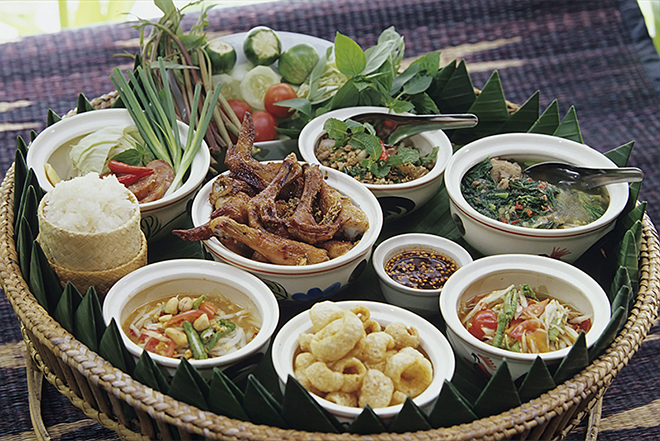
Southern Thai Cuisine
Introduction to Southern Thai Cuisine
Now let’s move on to the southern part of Thailand, where we discover another dimension of Thai cuisine. Southern Thai cuisine is known for its rich and flavorful dishes, which are often influenced by the culinary traditions of Malaysia and India. The food of this region is characterized by its spiciness, richness, and the use of fresh herbs and spices.
Influence of Malay and Indian Cuisine
Due to its proximity to Malaysia, Southern Thai cuisine has been heavily influenced by Malay culinary traditions. One of the most popular dishes that showcases this influence is Massaman Curry, a rich and fragrant curry made with a combination of spices such as cinnamon, cardamom, and cloves. Massaman Curry is often made with beef, potatoes, and peanuts, resulting in a hearty and comforting dish that is packed with flavor.
In addition to Malay influences, Southern Thai cuisine also draws inspiration from Indian cuisine. This can be seen in dishes such as Roti, a crispy and flaky flatbread that is often served with a savory curry or a sweet filling. Roti is a popular street food in Southern Thailand and is enjoyed by both locals and tourists.
Signature Dishes of Southern Thailand
Apart from Massaman Curry and Roti, Southern Thailand is also known for its other signature dishes. One such dish is Tom Kha Gai, a creamy and aromatic chicken soup made with coconut milk, lemongrass, and galangal. The soup is often flavored with lime juice and fish sauce, resulting in a perfect balance of flavors that is both refreshing and satisfying.
Another must-try dish from Southern Thailand is Pad Pak Boong, a stir-fried morning glory dish that is often cooked with garlic, chili, and soy sauce. This dish is simple yet flavorful and is a favorite among locals for its freshness and crunchiness.
Northeastern Thai Cuisine
Introduction to Northeastern Thai Cuisine
Lastly, let’s explore the cuisine of Northeastern Thailand, also known as Isan cuisine. Northeastern Thai cuisine is heavily influenced by the culinary traditions of Laos, which is located just across the border. The food of this region is known for its bold and spicy flavors, as well as its use of fermented ingredients such as fish sauce and shrimp paste.
Influence of Laotian Cuisine
Due to its close proximity to Laos, Northeastern Thai cuisine has been greatly influenced by Laotian culinary traditions. One of the most popular dishes that showcases this influence is Som Tam, a spicy and tangy green papaya salad that is often enjoyed with sticky rice and grilled meat. Som Tam is a staple in Northeastern Thailand and is loved for its refreshing flavors and crunchy texture.
Another dish that highlights the influence of Laotian cuisine is Larb, a flavorful meat salad made with minced meat, fresh herbs, and toasted rice powder. Larb is often enjoyed as part of a meal or as a filling for lettuce wraps, and it is known for its bold and aromatic flavors.
Signature Dishes of Northeastern Thailand
In addition to Som Tam and Larb, Northeastern Thailand is also known for its other signature dishes. One such dish is Gaeng Siao, a spicy and sour soup that is often made with pork ribs and a variety of fresh vegetables. Gaeng Siao is known for its intense flavors and is often enjoyed with sticky rice.
Another must-try dish from Northeastern Thailand is Sai Krok Isan, a fermented sausage made with a combination of pork and rice. The sausage is typically grilled or fried, resulting in a smoky and flavorful snack that is enjoyed by locals and tourists alike.
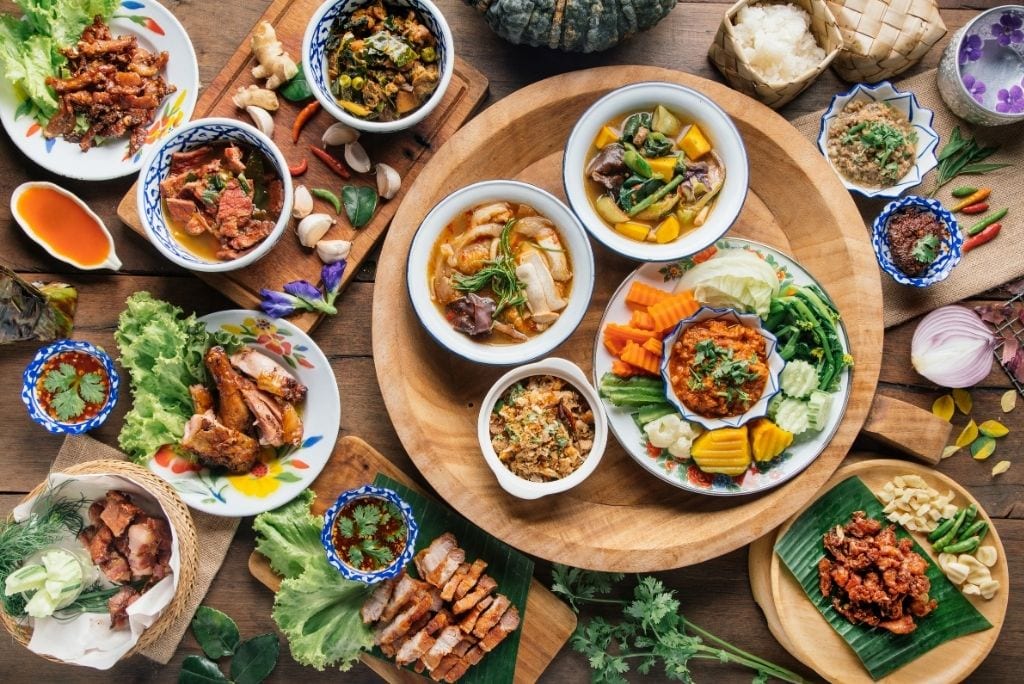
Street Food Culture in Thailand
Exploring Thai Street Food Scene
No culinary journey in Thailand would be complete without experiencing the vibrant street food culture that the country is famous for. Thai street food is a true reflection of the country’s rich culinary traditions and offers a wide variety of dishes that are both delicious and affordable.
In cities like Bangkok, you will find bustling street markets and food stalls offering an array of mouth-watering dishes. From savory fried noodles to grilled meats and flavorful curries, there is something to satisfy every palate. The best way to experience Thai street food is to simply wander through the streets, following the enticing aromas and joining the locals in enjoying their favorite snacks and meals.
Iconic Street Food in Bangkok
Bangkok, the capital city of Thailand, is a haven for street food enthusiasts. The city is known for its vibrant and diverse culinary scene, offering a wide range of dishes from all parts of the country.
One iconic street food dish that you must try in Bangkok is Pad Thai. This stir-fried noodle dish is made with a combination of rice noodles, shrimp, tofu, bean sprouts, and eggs, all cooked in a sweet and tangy sauce. Pad Thai is often enjoyed with a squeeze of lime juice and a sprinkle of crushed peanuts, adding an extra layer of flavor and texture to the dish.
Another popular street food dish in Bangkok is Grilled Pork Skewers, also known as Moo Ping. These tender and flavorful skewers are marinated in a combination of soy sauce, garlic, and sugar, and then grilled to perfection. They are often served with a spicy dipping sauce and are a favorite among locals and tourists alike.
Regional Variations of Street Food
While Bangkok offers a wide variety of street food from all regions of Thailand, each region has its own unique street food specialties. In the north, you can find dishes such as Khao Soi and Sai Oua, which are popular street food choices among locals.
In the south, you can indulge in dishes such as Pad Thai, Green Curry, and Roti, which are often enjoyed by beachside stalls and night markets.
In the northeast, you can savor dishes such as Som Tam and Larb, which are often enjoyed with sticky rice and grilled meats.
No matter which region of Thailand you find yourself in, you can be sure to find an array of delicious street food options that will leave you wanting more.
Fusion Cuisine in Thailand
Emerging Trends in Thai Cuisine
In recent years, Thailand has seen the emergence of fusion cuisine, where traditional Thai flavors are combined with international culinary styles. This fusion of flavors has created a whole new dining experience, offering a unique and innovative twist on classic Thai dishes.
One emerging trend in Thai fusion cuisine is the incorporation of Western ingredients and cooking techniques. Chefs are experimenting with ingredients such as cheese, butter, and cream, and incorporating them into traditional Thai dishes. This fusion of flavors creates dishes that are both familiar and exciting, offering a new perspective on Thai cuisine.
Influence of International Culinary Styles
Thai fusion cuisine also draws inspiration from other international culinary styles, such as Japanese, Italian, and Mexican. Chefs are combining Thai flavors and ingredients with techniques and ingredients from these cuisines, resulting in dishes that are both visually stunning and delicious.
For example, Thai-style sushi rolls are becoming increasingly popular, where traditional sushi ingredients such as raw fish and seaweed are combined with Thai flavors such as chili, lemongrass, and fish sauce. These rolls offer a unique and flavorful twist on traditional sushi and are loved by sushi enthusiasts around the world.
Innovative Thai Fusion Restaurants
In addition to individual chefs incorporating fusion flavors into their dishes, there are also a number of Thai fusion restaurants that specialize in blending Thai flavors with international cuisines. These restaurants offer a range of innovative and creative dishes that are sure to surprise and delight your taste buds.
From Thai-inspired pizzas topped with tropical fruits and spicy chili sauce to Thai-infused burgers served with sweet and tangy mango salsa, these restaurants are pushing the boundaries of traditional Thai cuisine and offering a whole new dining experience.
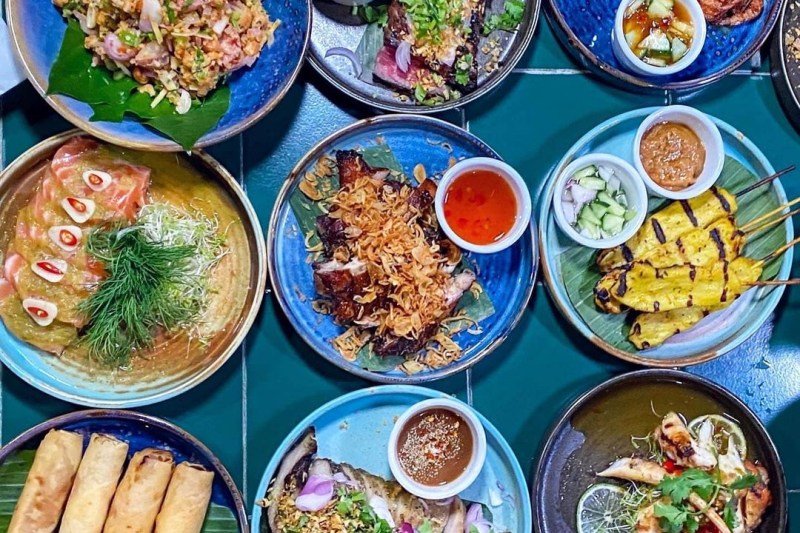
Vegetarian and Vegan Options in Thai Cuisine
Introduction to Vegetarian and Vegan Thai Cuisine
For those who follow a vegetarian or vegan lifestyle, Thai cuisine offers a wide variety of delicious options. Thailand is known for its abundant use of fresh herbs, spices, and vegetables, making it easy to find vegetarian and vegan dishes that are packed with flavor and nutrients.
The key to enjoying vegetarian and vegan Thai cuisine is to explore the rich variety of vegetable-based dishes available. By substituting meat with tofu, tempeh, or a variety of vegetables, you can still enjoy the bold flavors and aromatic spices that Thai cuisine is known for.
Traditional Plant-Based Thai Dishes
There are several traditional Thai dishes that are naturally vegetarian or can easily be made vegan. One such dish is Pad Pak, a stir-fried vegetable dish that is often made with a variety of fresh vegetables such as broccoli, mushrooms, carrots, and baby corn. This dish is seasoned with garlic, soy sauce, and chili, resulting in a flavorful and satisfying meal.
Another popular plant-based dish is Papaya Salad, also known as Som Tam. This dish is made with shredded green papaya, tomatoes, green beans, and peanuts, and is dressed with a tangy and spicy sauce. Som Tam is often enjoyed with sticky rice and is a favorite among vegetarians and vegans for its fresh and vibrant flavors.
Top Vegetarian Restaurants in Thailand
If you’re looking to explore vegetarian and vegan Thai cuisine in more depth, there are several restaurants in Thailand that specialize in plant-based dishes.
One top recommendation is May Kaidee, a well-known vegetarian and vegan restaurant with locations in Bangkok and Chiang Mai. May Kaidee offers a wide variety of dishes, from traditional Thai curries and stir-fries to innovative fusion dishes that blend Thai flavors with international cuisines.
Another popular choice is Khun Churn, a renowned vegetarian restaurant in Bangkok. Khun Churn offers a buffet-style dining experience, where you can choose from a wide variety of vegetarian and vegan dishes that are made with fresh and organic ingredients.
Thai Desserts and Sweet Treats
Introduction to Thai Desserts
No Thai culinary experience would be complete without indulging in some of the country’s delightful desserts and sweet treats. Thai desserts are known for their unique flavors, textures, and presentation, making them a feast for both the eyes and the taste buds.
Thai desserts often feature ingredients such as coconut milk, palm sugar, and tropical fruits, resulting in dishes that are both sweet and refreshing. Many Thai desserts also incorporate traditional Thai flavors such as pandan, lemongrass, and jasmine, adding an extra layer of complexity to the dishes.
Popular Thai Sweet Treats
One popular Thai sweet treat that you must try is Mango Sticky Rice, also known as Khao Niao Mamuang. This simple yet delicious dessert features ripe mangoes served with sweet sticky rice, which is cooked in coconut milk and flavored with palm sugar. The combination of the sweet and creamy mangoes with the fragrant and sticky rice creates a harmonious balance of flavors that is simply irresistible.
Another must-try Thai dessert is Tub Tim Grob, a colorful and refreshing dish made with water chestnuts, red rubies made from tapioca flour, coconut milk, and shaved ice. This dessert is often served in a sweet and fragrant syrup, and it is a popular choice during the hot summer months.
Unique Ingredients in Thai Desserts
Thai desserts often feature unique ingredients that add a touch of authenticity and flavor. One such ingredient is Pandan, which is a tropical plant that is used to flavor many Thai desserts. Pandan has a fragrant and sweet aroma, and its vibrant green color adds an attractive touch to desserts such as Pandan Custard and Pandan Jelly.
Another unique ingredient is Durian, a tropical fruit known for its strong and distinct aroma. Durian is often used in Thai desserts such as Durian Sticky Rice and Durian Ice Cream, offering a unique and indulgent taste experience for those who are adventurous enough to try it.
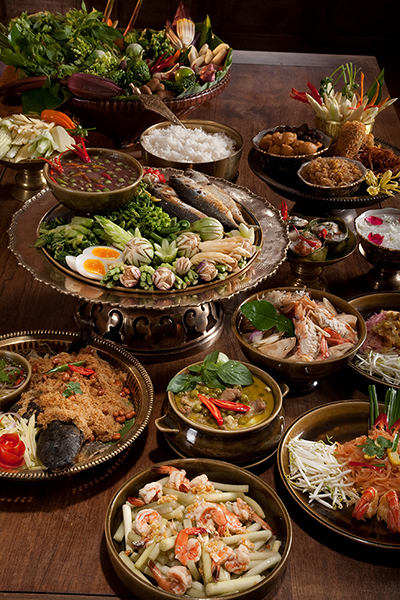
Thai Beverages: From Tea to Cocktails
Traditional Thai Tea Culture
Thailand has a rich tea culture that dates back centuries. Thai tea is known for its bold and aromatic flavors, as well as its vibrant colors. The country offers a variety of teas, from traditional teas such as Green Tea and Oolong Tea to unique and flavorful blends such as Thai Milk Tea and Butterfly Pea Flower Tea.
Thai Milk Tea, also known as Cha Yen, is a popular and refreshing drink that is made with black tea, condensed milk, sugar, and ice. The tea is often brewed strong and then sweetened with condensed milk, resulting in a creamy and indulgent beverage that is loved by locals and tourists alike.
Refreshing Thai Beverages
In addition to tea, Thailand offers a range of refreshing non-alcoholic beverages that are perfect for quenching your thirst in the hot and humid climate. One such beverage is Nam Manao, a refreshing limeade that is made with fresh lime juice, sugar, and soda water. Nam Manao is known for its tangy and citrusy flavors, making it a perfect choice for a hot summer day.
Another popular drink is Cha Manao, a Thai-style iced tea that is made with black tea, fresh lime juice, and sugar. This drink is often enjoyed with a squeeze of fresh lime juice and a sprinkle of crushed ice, making it a refreshing and satisfying beverage.
Creative Thai-inspired Cocktails
Thailand also offers a variety of creative and flavorful cocktails that showcase the unique flavors and ingredients of Thai cuisine. From sweet and fruity concoctions to bold and spicy mixes, there is a Thai-inspired cocktail for every taste.
One popular Thai cocktail is the Mai Tai, a tropical drink that is made with rum, orange curaçao, lime juice, and Orgeat syrup. This cocktail is often garnished with fresh fruit and served with a colorful cocktail umbrella, adding a touch of fun and whimsy to the drink.
Another favorite is the Thai Basil Mojito, a refreshing twist on the classic Mojito that incorporates Thai flavors such as basil and lime. This cocktail is made with rum, fresh basil leaves, lime juice, sugar, and soda water, resulting in a refreshing and flavorful drink that is perfect for a night out.
Conclusion
In conclusion, Thai cuisine is as diverse and vibrant as the country itself. From the bold and aromatic flavors of Northern Thai cuisine to the rich and complex flavors of Central Thai cuisine, each region offers a unique and unforgettable culinary experience.
Thai street food is a must-try for any food lover, with its wide variety of flavors and dishes that can be found in bustling markets and food stalls. Thai fusion cuisine offers a new twist on traditional dishes, incorporating international flavors and techniques to create innovative and exciting dishes.
For those who follow a vegetarian or vegan lifestyle, Thai cuisine offers a wide variety of delicious options that are packed with flavor and nutrients. And of course, no meal is complete without indulging in some of Thailand’s delightful desserts and sweet treats, or sipping on a refreshing Thai beverage.
So, whether you’re a seasoned foodie or just someone looking to expand your culinary horizons, Thailand is a destination that is sure to satisfy your taste buds and leave you craving for more. So pack your bags, grab your appetite, and get ready to embark on a culinary adventure in the land of smiles.
